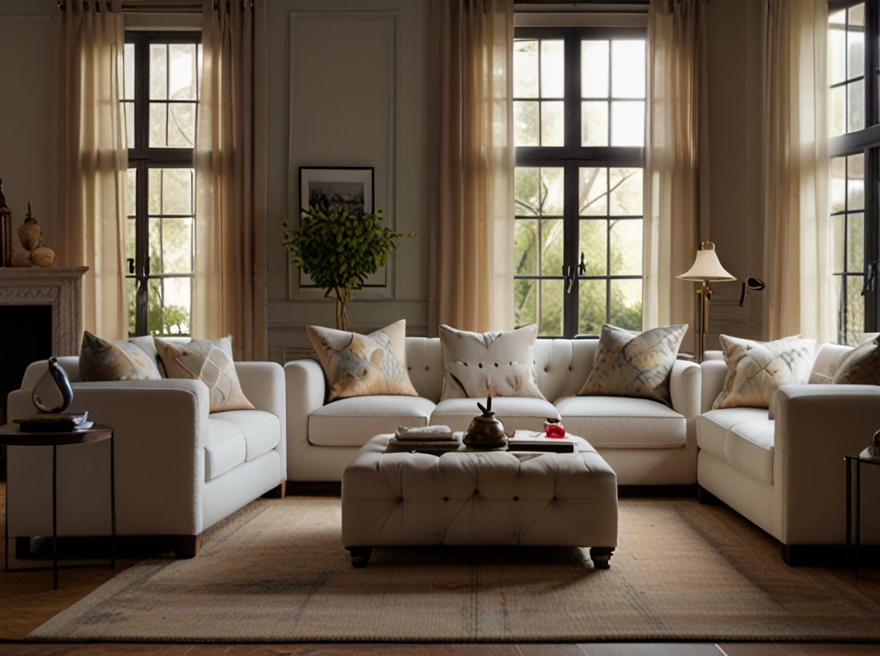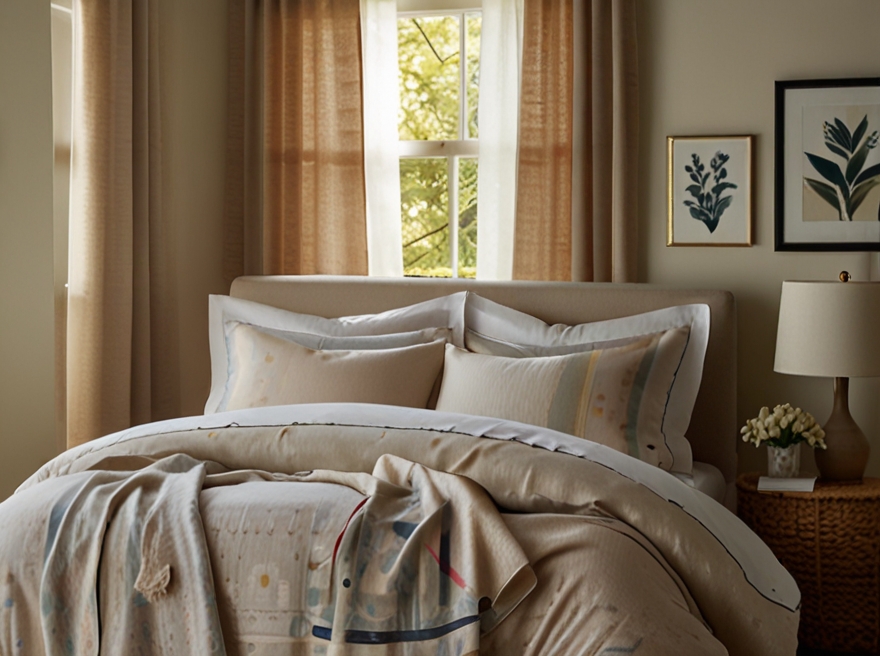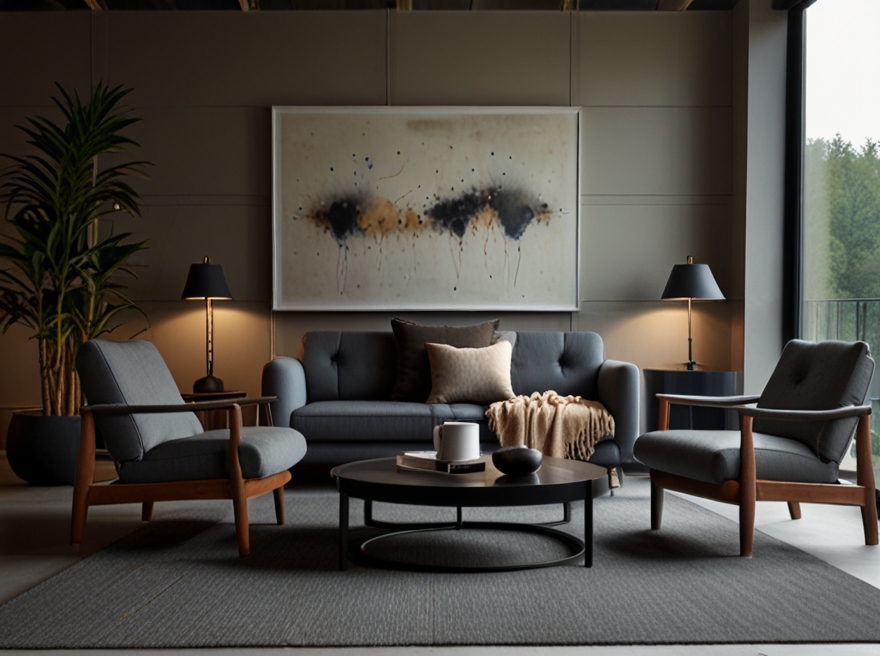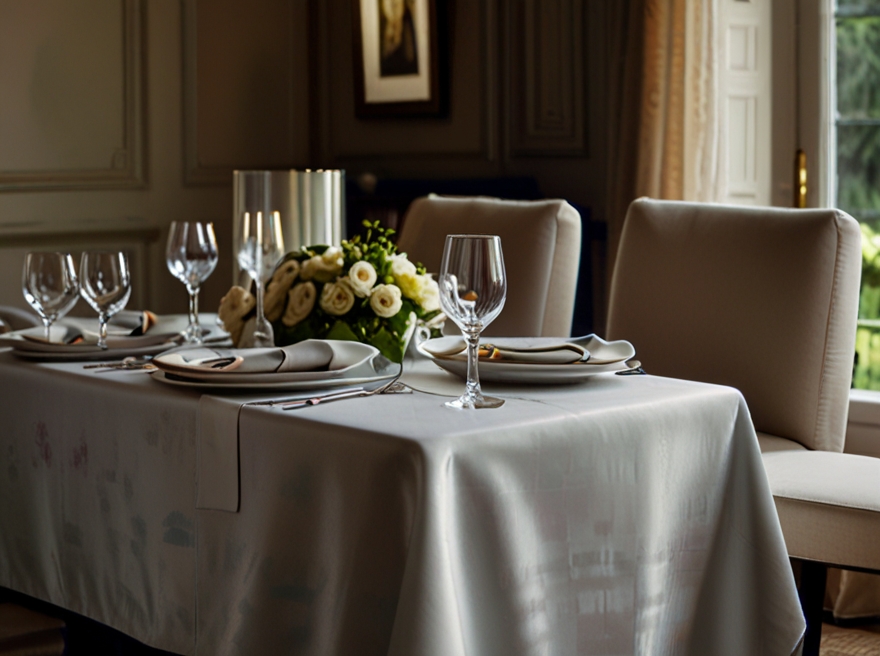Blended fabrics have emerged as a practical and versatile option for both contemporary and traditional homes in the UAE’s diverse and dynamic interior design landscape Hybrid fabrics combine the strengths of natural and synthetic fibers, offering unique benefits making it suitable for different applications. This guide explores the most popular fabric blends in vogue in the UAE, highlighting their advantages and potential drawbacks, to help you make the best choices for your interior design projects
1. Polyester-Cotton Blends (Polycotton)
Polyester-cotton blends, commonly known as polycottons, are a staple in the textile industry. This blend combines soft, breathable cotton with durable, wrinkle-resistant polyester.

Advantages:
Polycotton is affordable, durable and easy to use. It resists scratches and abrasions, making it low maintenance. The mixture is versatile and suitable for upholstery, bedding and curtains.
Disadvantages:
Although it offers some breathability, polycotton is not as comfortable as pure cotton in hot climates. It is also able to pill over time and is less environmentally friendly due to the polyester component.
Ideal Uses:
Great for everyday items like curtains, bed linens, and casual furniture upholstery.
2. Linen-Cotton Blends
The linen-cotton blend combines the cool, breathable properties of linen with soft, durable cotton. This blend is perfect for a comfortable indoor climate in the hot climate of the UAE.

Advantages:
This blend gives you a softer feel compared to pure linen and is more breathable. It’s durable and well absorbent, making it suitable for the UAE’s hot, dry climate.
Disadvantages:
Linen-cotton blends can wrinkle faster than synthetics and may require regular ironing. They are even more expensive than pure cotton.
Ideal Uses:
Ideal for summer bedding, lightweight curtains, and casual upholstery.
3. Wool-Polyester Blends
Wool-polyester blends are known for their warmth and durability. This combination leverages wool’s natural insulation and polyester’s strength and wrinkle resistance.

Advantages:
Wool-polyester blends are warm, resilient, and less prone to wrinkling. They offer good insulation, making them suitable for cooler months or air-conditioned environments. The blend also reduces the itchiness sometimes associated with pure wool.
Disadvantages:
These fabrics can be less breathable and appear heavy, making them unsuitable for hot climates. They are also prone to pilling and special care should be taken when washing them.
Ideal Uses:
Perfect for winter throws, heavy curtains, and cozy upholstery in cooler interiors.
4. Silk-Cotton Blends
Silk-cotton blends offer a luxurious feel with the practical benefits of cotton. This blend combines the sheen and elegance of silk with the durability and comfort of a cotton.

Advantages:
This fabric blend is lightweight, breathable, and has a subtle sheen, making it both comfortable and aesthetically pleasing. It drapes beautifully, adding elegance to any space.
Disadvantages:
Silk-cotton blends can be delicate and require careful handling to avoid damage. They may be more expensive than other blends and are less durable under heavy use.
Ideal Uses:
Best for decorative elements like cushions, lightweight drapes, and elegant table linens.

